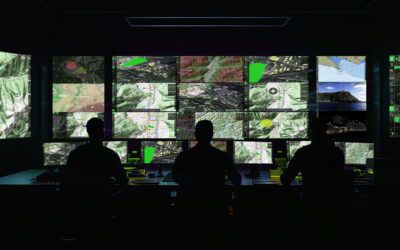Training pilots, especially when it comes to high-pressure operations for law enforcement, search and rescue and other aerial theatres, is not only difficult but expensive. Without question, pilots operating in these circumstances have to be the best of the best. AR (or Augmented Reality) is being grandfathered into training programs, development and continual pilot assessment to help these highly skilled individuals achieve maximum efficiency.
AR technology can help at almost every level. From operations to basic training, overlaying AR with real-world awareness increases the ability of pilots to achieve consistently high levels of performance, learn and adapt to new technology faster, and save operators, especially small-scale outfits, a considerable amount of money.
Why is AR so good for training pilots?
One of the fundamental reasons why AR has been so successful in pilot training is that it is intuitive. It uses technology we are already familiar with and applies it to a more technologically-advanced environment. But no matter how cutting-edge the technology is, trainee pilots still have an advantage in using hardware they are already familiar with and intuitive and user-friendly software.
The modular design of AR programs also makes it possible to train pilots on individual ‘layers’ before combining them into a complete operational system. This makes it less confusing for a trainee who already has plenty to think about simply flying the aircraft. By minimising the potential for misunderstanding or confusion, learning times are faster, and pilots can apply that acquired knowledge and interactivity with AR much sooner.
The modular set-up of AR also makes it much more affordable for smaller operators or those whose operational budgets are strictly limited. Put simply, AR gives you more ‘bang for your buck’ and also enables operators to customise their systems to meet their specific needs.
Reducing fatigue
Because AR does much more of the ‘hard work’, especially when it comes to operational applications, it can assist in reducing operator fatigue. This allows the pilot to focus more on the task and make fewer mistakes through tiredness or mental fatigue. The overlaid platforms carry out reality processing in simultaneous GIS and 3D graphics, giving a clearer picture of the terrain and allowing a pilot to make faster, more accurate decisions based on the information presented.
AR also gets trainee pilots used to working with ‘real-time’ reality processing software, improving response times in the air.
AR Smart Glasses – giving pilots a ‘heads up’
While the invention of smart glasses failed to find favour with the general public, it does have a place within the aviation industry. Heads–up displays were originally designed for fighter pilots to enable them to make far quicker responses to high-pressure situations. Now, this technology has filtered down to civil aviation and other operators such as emergency services and law enforcement.
OPENSIGHT – AR for the future
We have established that AR’s primary role is to enhance pilots’ operational efficiency in real-time. To do this, AR must improve awareness, regardless of the situation or circumstances under which it is deployed. This can be a daunting part of trainee pilots’ training program. So the obvious advantage of easily understood and simple-to-apply AR is that it reduces the stress on new pilots. By working in harmony with the operator, AR can be applied to any scenario, whether it’s a training flight or an operational one.
From target acquisition to crowd management, AR makes pilots more effective and more skilled, enabling them to respond faster to accurate, real-time information. And thanks to its modular nature, it’s also much easier for smaller operators to incorporate into their operational system both in the air and on the ground, with relatively little financial outlay.
To find out more about OPENSIGHT, contact us today.




